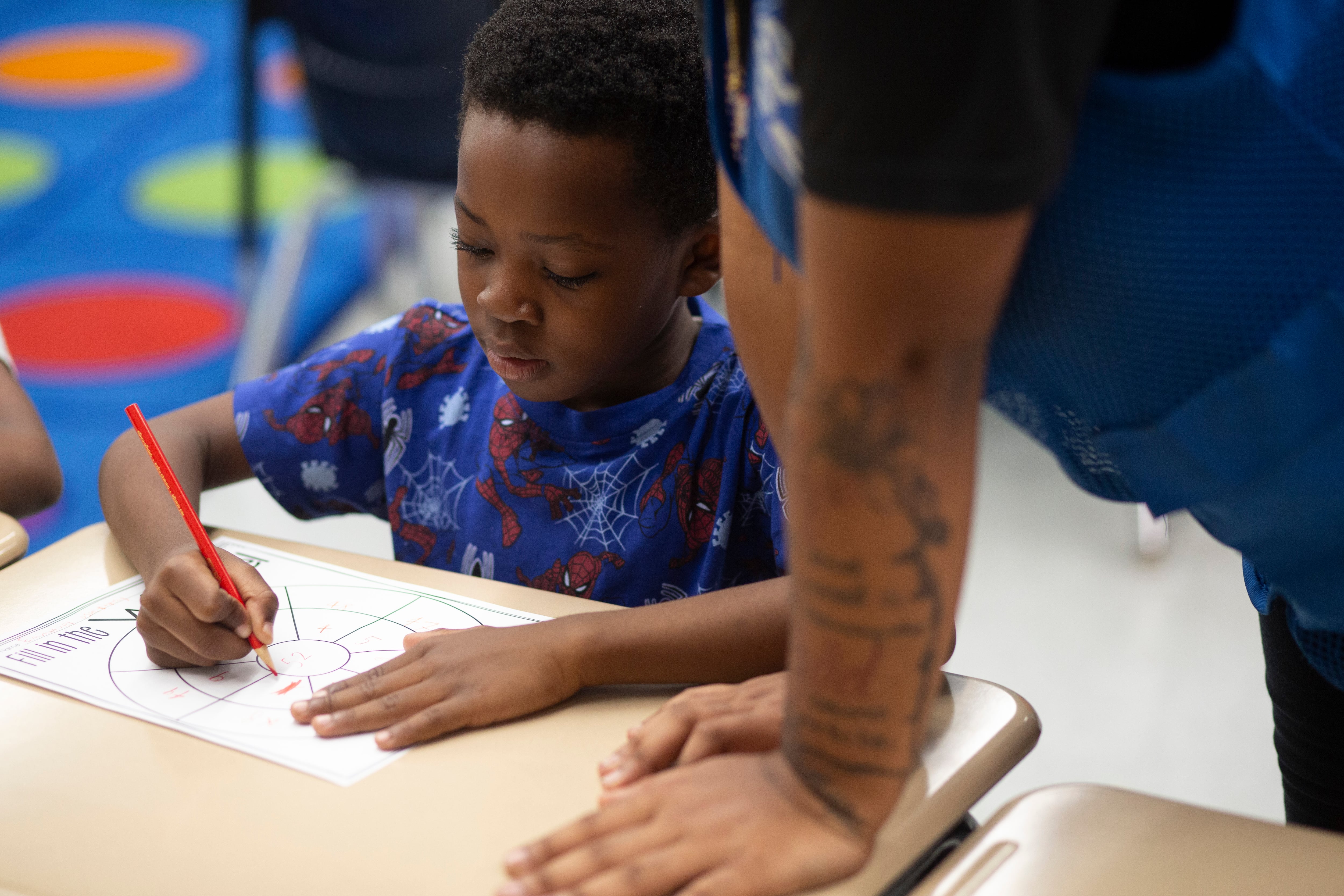Sign up for Chalkbeat Newark’s free newsletter to keep up with the city’s public school system.
Newark Public School officials have created a plan aimed at boosting student achievement after spring state test scores showed difficulties in writing and English language arts.
The director of the district’s English language arts department, Jazleen Othman, spelled out three problems with the district’s instruction at a recent Board committee meeting: ineffective reading instruction during the pandemic, simplifying the curriculum, and inadequate writing instruction.
Othman told the board that her department hopes to combat these problems through several tactics, such as introducing new approaches to teaching phonics, implementing explicit writing strategies, and supporting teachers’ knowledge of an evidence-based reading approach known as the science of reading.
The targeted plan comes just weeks after the results of this spring’s state test scores showed Newark students continue to need academic support to recover from the pandemic. For the second year in a row, most Newark students performed worse than pre-pandemic levels in reading. In grades 3 to 9, an average of 29% of Newark students passed the English language arts portion of the exam, compared to 36% in 2019 before the pandemic.
Some grades fared worse – only 19% of the district’s third-graders passed ELA, the lowest of any grade in Newark for a second year in a row. Seventh and eighth graders had the highest English language arts scores, each at about 37%, which increased this year by about 4 and 5 percentage points respectively.
Public school leaders are attributing reading issues in early grades to the switch to remote learning during the pandemic, which they say has hindered students’ reading progress and caused disfluent readers.
District officials also said they designed a new ELA curriculum for grades K-8 currently used in classrooms this year. Newark Public Schools has released limited details about the new curriculum to Chalkbeat Newark through a public records request.
District to focus on new reading and writing strategies
The district’s work to improve student’s skills began over the summer when roughly 10,000 public school students with low attendance, grades, and state test scores were required to attend summer school to target problem areas in math and reading, like sounding out words, handwriting, and reading comprehension, among others.
Students are struggling with alphabetic knowledge, the basic ability to recognize letters and their sounds, Deering said.
But Othman laid out even more specifics last month to the school board.
The district’s Office of English Language Arts is adopting a structured approach to teaching phonics by implementing SIPPS, also known as Systematic Instruction in Phonological Awareness, Phonics, and Sight Words. Through this research-based approach, students are guided through the reading development process, and new and struggling readers learn through explicit routines focused on word sounds and spelling, and high-frequency words, or words that appear most often in writing.
The district is also implementing Wilson Fundations, a curriculum rooted in the science of reading that builds the foundations for reading, spelling, and handwriting. That work is supplemented through the Geodes Classroom Libraries, a collection of books that help new and developing readers, and builds on skills from the Wilson Fundations curriculum.
Deering said this isn’t the first time the district has used elements of the science of reading. It has adopted components of the approach since 1998 that focus on students learning the basics of reading and writing by decoding words and sounding out letters.
During the presentation to board members, Othman said that as soon as children learn to decode words, they should be provided with grade-level reading and writing opportunities and discuss grade-level work to promote critical thinking.
After finding problems with their writing instruction, the district recruited The Writing Revolution, an organization that helps school districts implement its explicit writing strategy known as the Hochman Method. According to the organization, the approach is not a separate writing curriculum, but rather a set of strategies embedded in student learning.
Preparing teachers in the foundations of reading instruction
Othman and her office found that the district’s ELA curriculum is simplified, she told the board, resulting in limited learning on grade-level content and critical thinking. Teachers, vice principals, department chairs, and teacher coaches will need to learn how to unpack the new curriculums.
The district will train teachers and school leaders through professional development to support the new shifts in learning approaches, Deering said, and officials will adjust the approaches as they monitor students’ academic progress.
Since August 2022, over 1,800 Newark public school educators enrolled in The Writing Revolution’s online training to learn and work with the new method. The group has worked with district schools and leaders to visit classrooms and provide ongoing support, according to the organization. Over the summer, the strategy was embedded in the first two units of the English Language Arts curriculum.
The district said officials will monitor the effectiveness of the new curriculums and approaches mainly through students’ academic progress in reading, but also using state test scores and periodic assessments such as the Northwest Evaluation Association (NWEA) MAP growth assessment.
Officials will adapt their approach based on student achievement and growth.
Jessie Gomez is a reporter for Chalkbeat Newark, covering public education in the city. Contact Jessie at jgomez@chalkbeat.org.





